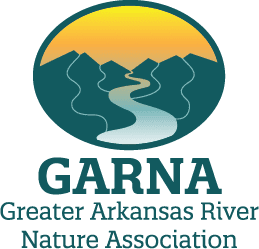Summary of Fourmile Visitor Use Data 2009-2017
Memorial Day Visitor Use Trends
Our Memorial Day weekend survey in 2017 marked the ninth annual survey of visitor numbers and activities. We began patrolling and observing – with Forest service and BLM staff – in 2003, but did not begin formal surveys until 2009.
Surveying over 220 known camping sites along Fourmile’s 130 miles of dirt roads on a single day on the busiest weekend of the year poses challenges. Over the years we’ve simplified data collection to ensure our 5 teams are as consistent as possible. Absolute numbers are not very accurate, but allow identifying trends and issues where a management action (fencing an area, closing an unauthorized spur, posting a sign, more visitor education) can head off future problems.
Although we divide Fourmile into five separate survey sectors, and can compare types of use between them, in the table below we have combined data from all five to illustrate trends. We adopted a different format in 2016 and have not yet had time to reformat all earlier years, but the table still has interesting stories to tell.
SUMMARY OF FOURMILE VISITOR USE DATA 2009-2017
| No. sites occupied | 81 | 109 | 76 | 81 | 98 | * | 67 | 157 | 187 R |
| % occupied of available | 58 | 78 | 55 | 43 | 52 | * | 32 | 65 | 84 R |
| New sites created | dnc | dnc | dnc | 4 | 5 | * | 2 | 12 | 25 R |
| Overnight Camping Units | 287 | 368 | 276 | 267 | 386 | * | 277 | 486 | 524 R |
| % units OHV-associated | 87% | 82% | 66% | 70%? | 59% | * | 48% | 32% | 43% |
| Day use/parking counts | 20 | 59 | 25 | 41 | 26 | * | 48 | 78 | 47 |
| OHVs (ATVs+motorbikes) | * | * | * | 262 | 341 | * | 188 | 453 | 607 R |
| Mountain bikes | * | * | * | 9 | n/a | * | 41 | 66 | 45 |
| Street Vehic (cars/trucks) | * | * | * | * | * | * | 194 | 375 | 448 R |
| YEAR | 2009 | 2010 | 2011 | 2012 | 2013 | 2014 | 2015 | 2016 | 2017 |
Notes: 2015 was a very wet weekend and all numbers were very low
dnc=data not collected; * = data collected but not yet reentered in 2016 format; R=record result
This Memorial Day 2017 posted record results in 6 of the 9 primary indicators of use, suggesting in many ways it was the busiest Memorial Day ever. It also confirms upward trends. Record indicators were
- Of approximately 220 campsites available, 187 were occupied
- The 84% occupancy is higher than ever recorded
- Twenty-five new sites were created – twice the highest previous observation
- Overnight Camping Units exceeded 500 for the first time ever
- The total of OHVS exceed 600 for the first time ever
- Total street vehicles (cars, jeeps, SUVs, pickups) was nearly 450
The three remaining indicators need some interpretation
- The percentage of overnight Camping Units associated with OHVs has been steadily dropping over the past 9 years, but since the total number of OHVs observed is at a record high, this drop most likely represents an increase in other user types: mountain bikes, general campers, people using Fourmile as a convenient place to camp for other local activities
- Day use/parking appears to be trending downward. These are mostly OHV users, and probably more of local origin than from outside; local OHV users may be adopting the strategy of skipping Memorial Day knowing it will be extremely crowded
- Mountain bike use in this data is inconclusive, but other measures which look at trail use not on Memorial Day show very large increases – and Chaffee County bicycle activity is way, way up in general
It’s important to note Memorial Day is by far the busiest weekend in Fourmile’s summer season. This level of use, and the pressures it puts on Fourmile’s resources, comes only once a year (fortunately). Interestingly however, Memorial Day impacts have lasting impacts: new sites and little spurs off to them tend to get used again in following years; existing campsites expand in place. In effect, the balloon gets expanded a little every year so that the public comes to expect a bigger balloon.
Friends of Fourmile is taking these observations – and analysis – to the BLM and Forest Service. We are continuing a discussion of what increased use and shifting patterns do to the resources our chapter is focused on helping protect, and what actions the agencies can take to address this. At the heart of the debate is whether eventually Fourmile should adopt active measures to limit the capacity of its use, especially on peak weekends. Our view: that time is inevitably coming.
New mapping tool (monitoring use in the digital/satellite age…)
Taking advantage of the 14+ years keeping track of recreational use in Fourmile, we’ve recently expanded the way we keep tabs on all that stuff.
In past years, we’ve put information into lists and tables and placed locations on topo maps. These are useful but it can still be confusing as to where things are on the ground, and to track if they are changing. It’s sometimes not easy to share this information with others who need to know in the BLM and Forest Service.
The next-gen system we’re working on is to record information in Google Earth. Turns out we can place all 220 campsites, dozens of trailheads and parking areas and little camping spurs, and site-specific observations (even boundaries of private lands inside the area) in different layers that show up on Google Earth’s satellite imagery. These layers can be switched on and off so you can isolate different types of information. And, it’s easy to make changes and send around a “folder” of updated information to others who can “click” to bring up their own copy of Google Earth with all our data visible.
As a quick intro to what this looks like, here’s just one of those layers we’re developing:
Here we’re displaying over 220 established dispersed legal camping sites in the 100,000 acres of BLM and US Forest Service lands that make up Fourmile. To make it less confusing, we’ve turned off all the numbers which identify these sites. The handy thing is that on Google Earth you can zoom right down to individual sites and be sure identifying numbers are correct, and make a specific comment about that site.



